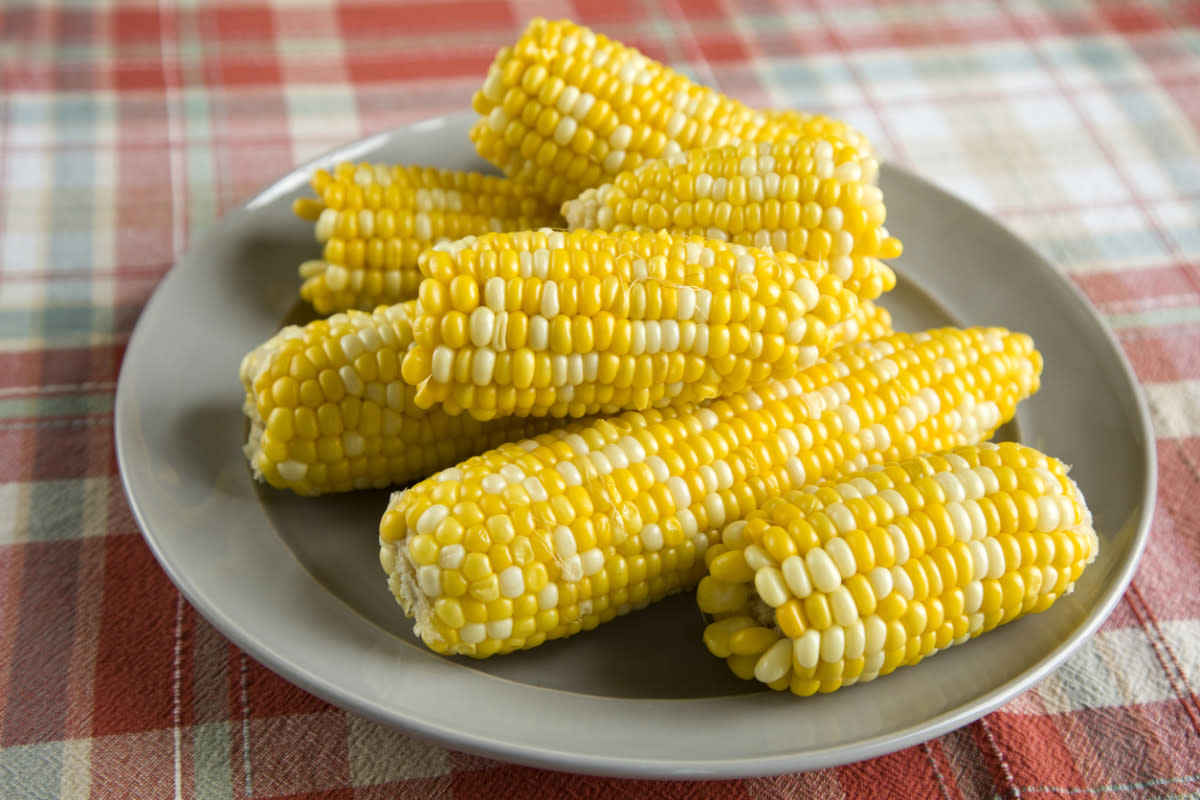The Secret Ingredient to Tender, Juicy, Perfectly Cooked Corn

When it comes to summer vegetable side dishes, corn is at the top of my list. The sweet, starchy vegetable is a go-to year-round, but there’s something about a plate of good BBQ and buttered corn that makes me feel like summer has truly arrived.
Speaking of butter, slathering it on fresh corn on the cob is just one way to dress up this veggie. There are literally dozens of corn recipes that are perfect for frozen, fresh or canned corn. During the summer, corn often gets cooked on the grill, but some cooks swear by boiling their corn no matter how hot it is outside.
Growing up, there was a preferred way to cook corn in my parents' kitchen and that was in a mixture of water and milk. Trust me, once you try it you'll never go back to plain old water-boiled corn. Here's what you need to know.
Related: The Grandpa-Approved Trick to Perfectly Cooked, Silk-Free Corn
Why You Should Boil Corn in Milk and Water
The origins of corn boiled in milk are a bit of a mystery. Personally, as a Midwesterner, this method was a method that I observed in my parents’ kitchen. Perhaps it’s a Midwestern technique with some Southern influence.
While salted water will give you tender corn, adding some milk to the water really changes the game. The milky bath enhances the corn’s natural sweetness and infuses each kernel with a rich flavor. It's a simple upgrade but has a big impact. I also throw in some butter, which is corn's BFF as you already know. Once the corn comes out of it's buttery milk bath you can eat it as is or add more butter, which never hurts.
Related: How Long You Should Really Boil Corn on the Cob for Perfectly Sweet Ears
How to Perfectly Cook Corn on the Cob in Milk and Water
There are many variations on this method, but this is how I like to do it at home. Fill a large stockpot halfway with water. Bring the water to a boil, then add 1 cup of milk (I typically use whole milk) and 1/2 to 3/4 cup of unsalted butter. Reduce the heat to low, then add 6 ears of husked corn. Cook on low for 15–20 minutes. After 20 minutes, use a fork or tongs to test the tenderness of the kernels. If they’re still hard, continue to cook them. When they're done to your liking, remove them and serve immediately.
Related: The Best and Easiest Grilled Corn on the Cob
Some Tips for Cooking Corn in Milk and Water
As we know, cooking is a subjective experience. Feel free to use my method as written or adjust it to fit your taste. Here are some things to keep in mind when you use this corn-cooking method.
Butter it up. I’ve found that the more butter add to the boil, the less you needed to apply to the cooked corn.
Keep them covered. Once you add the ears of corn, you may need to add more water. The level in the pot should be enough to cover the corn.
Keep an eye on the time. The fresher the corn, the less cooking time is needed. I have cooked a pot of frozen corn on the cob on low for up to 1 hour, and they were still tender and delicious. Fresh corn on the cob cooks much more quickly, of course. Test the corn periodically and remove it when it's cooked to the doneness you prefer.
Keep it simple. Some recipes include heavy cream or sugar in the water/butter liquid, but I think the simple combination of water, milk and butter brings out the vegetable's natural sweetness.
Season to taste. Feel free to also add black pepper and a dash of salt to your water, or apply the seasonings after cooking.
Make it vegan. I haven't used non-dairy milk for this recipe, but I would opt for almond milk and your favorite brand of vegan butter.
Up next: The Easiest Way to Cut Corn Off the Cob Without Kernels Flying Everywhere
